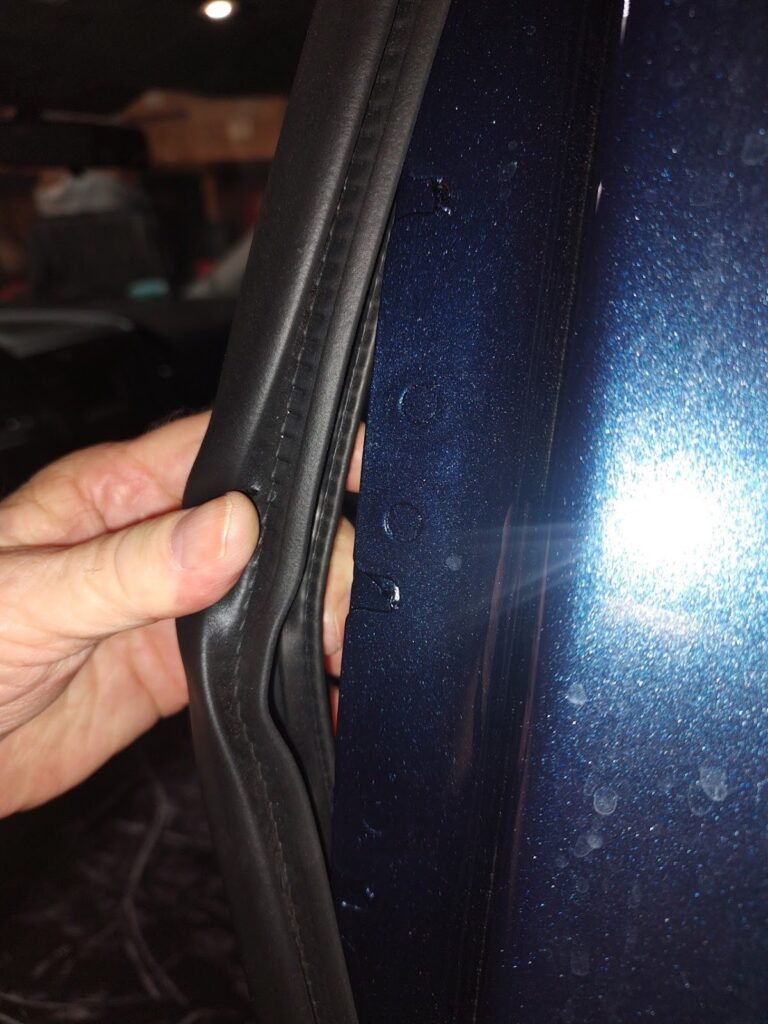Your vehicle’s cabin should shield you from heat, cold, water, and pollution. However, as your vehicle’s weatherstripping gets worn and damaged, its ability to seal the interior from the elements can get compromised. Eventually, the elements can creep into your cabin, which can be annoying to deal with. When this happens, it’s time to replace your door’s weatherstrip.
How Often Does Weatherstripping Wear Out?
You can expect your vehicle’s weatherstripping to last anywhere between 5 to 10 years. Once your vehicle reaches this threshold, you should regularly check the weatherstripping for cracks, tears, or breaks in the rubber. The strips can also detach or become loose. Sometimes, the strips might not have visible marks but they might not be creating a proper seal. As a result, water and road noise can enter the cabin. When this happens, it’s probably time to replace your vehicle’s weatherstripping.
Why Does Weatherstripping Wear Out?
Weatherstripping is made from rubber. Constantly opening and closing the door will cause wear. Eventually, the rubber can break apart and it won’t be able to create a proper seal.
Rubber also tends to become brittle as it’s exposed to temperature changes and moisture. Eventually, it’ll reach a point where it can break apart easily.
Sometimes, the weatherstripping’s adhesive can lose its stickiness and cause the rubber to become loose. Constant exposure to fluctuating temperatures and moisture can both wear out the rubber and the adhesive.
Why You Should Replace Your Vehicle’s Weatherstripping
Once your vehicle’s weatherstripping wears out, it’s going to show a bunch of annoying symptoms. The seals can create gaps where more noise can enter the cabin. Water entering the cabin is also a common symptom. This is especially annoying since it can damage your upholstery and cause mold to grow inside your vehicle.
You might also notice that your vehicle’s heating, ventilation, and air-conditioning (HVAC) system isn’t as effective anymore. This might be because outside air is finding its way into your cabin and affecting the interior temperature. As a result, your vehicle’s HVAC system might compensate by using more energy. Of course, there won’t be very much air entering the vehicle if the doors are closed unless the weatherstripping is totally gone.
Tips on Replacing Vehicle Weatherstripping
Wondering how to replace your vehicle’s weatherstripping? Follow these tips and tricks for an easier process.

Prepare the Right Materials
Use a screwdriver to shear off the old weatherstripping. A heat gun might also prove useful in removing stubborn bits of rubber.
A sharp utility knife or shears will make it easier to cut the weatherstripping down to size. Having extra weatherstripping adhesive might also be useful, in case you need to reseat the weatherstripping.
Use Degreaser to Diluted Soap to Remove Adhesive
Removing adhesives bit by bit can be time-consuming. Apply degreaser or soap over sticky adhesives and let them sit. These should make the adhesives easier to remove using some rags.
Cut the Weatherstripping Carefully
You need to be precise when cutting the weatherstripping down to its required length. There’s no reversing the process once you’ve cut the strip. It’s a good idea to measure twice before you cut the strip. You can also use the old weatherstripping as a guide, since you can simply copy its length. If you’ve overcut a strip, you shouldn’t stretch the weatherstripping because it might warp and result in leaks over time.
Secure the Weatherstripping Properly
Securing the weatherstripping properly is as simple as aligning it on its intended track and pressing it down. However, you should gently set the new stripping in place first. Once the entire piece of weatherstripping fits and aligns on its intended track, only then should you press firmly and let the adhesive dry.
You should wait for the adhesive to cure before closing the door or window. Otherwise, you risk moving the weatherstripping, and this might result in an improper seal.
Overall, replacing your door weatherstripping yourself is quite doable since you only need household tools and factory or aftermarket weatherstripping. As long as you patiently follow the tips listed above, you should be able to replace your vehicle’s old weatherstripping. That said, you shouldn’t be afraid to ask a professional for help if you don’t feel up to this task.
Any information provided on this Website is for informational purposes only and is not intended to replace consultation with a professional mechanic. The accuracy and timeliness of the information may change from the time of publication.







































